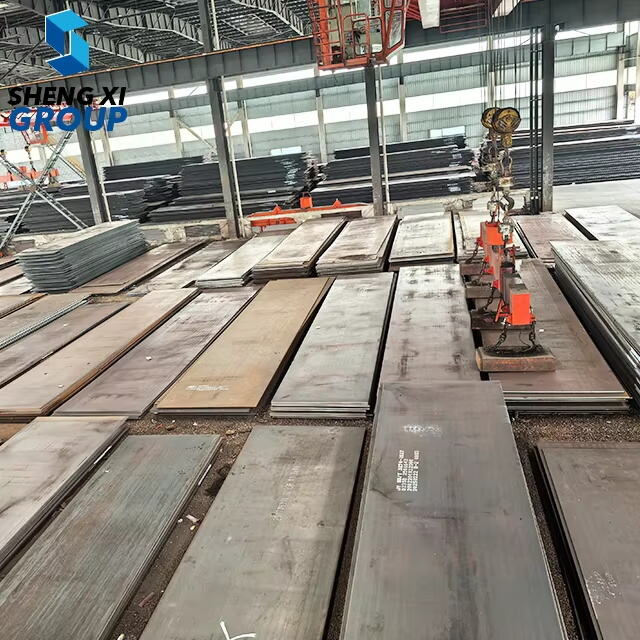What is Alloy Steel?
Alloy steel, integral to various industrial applications, is fundamentally a mixture of iron enhanced with key elements such as carbon, manganese, chromium, and nickel. Each of these elements plays a specific role in augmenting the properties of steel. For instance:
Carbon influences the hardness and strength of the alloy, making it an essential element in the formulation of tough and resilient steel varieties.
Manganese contributes to the overall strength and ductility, enabling the material to handle stress and strain effectively.
Chromium enhances toughness and wear resistance, providing anti-corrosive properties that are crucial for applications exposed to harsh environments, including chemical and medical equipment.
Nickel offers excellent resilience against thermal expansion, making it valuable for steel used in high-temperature conditions.
Industry standards, such as the ASTM A die codes, provide official definitions and categorization for alloy steels, ensuring consistent quality and performance expectations. Understanding these categories is vital for selecting the appropriate alloy steel for specific project requirements, balancing aspects like hardness, toughness, and corrosion resistance effectively.
The Superior Strength of Alloy Steel
Tensile Strength Capabilities
When talking about how strong a material really is when it gets stretched or pulled until it breaks, we're referring to tensile strength. Alloy steel stands out because it can handle a lot more stress than regular carbon steel. We're looking at around 400 to 1,000 MPa for alloy steel compared to much lower numbers for carbon varieties. That kind of strength explains why engineers reach for alloy steel whenever they need something that won't snap under pressure. Think about all those towering skyscrapers reaching into the sky or massive bridges spanning rivers and valleys. These structures rely heavily on alloy steel components precisely because they just don't break easily. Engineering manuals and research papers keep coming back to the same point time after time: high strength alloy steels perform exceptionally well across countless construction projects where ordinary materials would simply fail.
Impact Resistance Properties
When talking about impact resistance what we really mean is how well a material can handle sudden hits or shocks without breaking. Alloy steel stands out in this department thanks to added elements like nickel and chromium which boost its toughness against impacts. That's why manufacturers rely on alloy steel for parts that get hit hard all day long in places like construction equipment and car engines. Engineers actually put alloy steel through rigorous testing procedures known as Charpy impact tests to see how it holds up under stress. Results from these tests keep showing that alloy steel can take a real beating before failing, which explains why so many industries choose it when they need materials that won't crack under pressure during normal operation.
Alloy Steel Durability Characteristics
Wear Resistance Mechanisms
When materials face constant friction and abrasion, wear resistance becomes really important, and alloy steel stands out in this area. Elements added during manufacturing, including manganese and molybdenum, boost both hardness and ability to withstand wear, which makes alloy steel particularly suitable for tough environments. Mining operations and construction sites rely heavily on these special steels because they last longer under harsh conditions. Equipment made from wear-resistant alloys can operate continuously without frequent replacements, saving companies time and money. Research published in engineering journals consistently shows that alloy steels perform better against wear than other options available in the market today, which explains why so many manufacturers continue to choose them despite higher initial costs.
Fatigue and Corrosion Resistance
Materials that can withstand repeated stress cycles without breaking down are absolutely necessary in engineering applications. Alloy steel stands out because of how it handles cyclic loading situations better than regular steel does. What really makes alloy steel special is its ability to resist corrosion thanks to added chromium and nickel content. These elements create those tough oxide layers on the surface that stop rust from taking hold. For this reason, alloy steel gets used大量 in places like cars and boats where exposure to harsh conditions is inevitable. Anyone working with machinery knows that parts made from alloy steel last much longer before showing signs of wear or corrosion damage, making them the go to choice when reliability matters most.
Heat Treatment for Enhanced Properties
Quenching and Tempering Processes
When working with alloy steel, quenching and tempering stand out as key steps for boosting both toughness and overall strength. The quenching part basically means cooling down hot metal really fast after heating it up. This quick drop in temperature changes what happens inside the metal at microscopic level and makes it harder. What people often forget is how much stronger and resistant to wear this makes the final product. After quenching comes tempering, which involves heating the steel again but not as intensely this time. This second heat treatment helps take away some of that brittleness from quenching while still keeping most of the hardness. The result? Steel that can bend without breaking and holds up better under stress in real world applications.
Quenching Process: Rapidly cools steel, modifying microstructure and increasing hardness. It makes the steel more resistant to mechanical wear and enhances its strength considerably.
Tempering Process: Subsequently reheats the steel to reduce brittleness, enhancing ductility and toughness.
Scientific studies reveal significant improvements in the yield strength and hardness of alloy steel after these treatments, underscoring the importance of careful heat treatment in producing high-performance materials suitable for demanding applications.

Critical Applications of Alloy Steel
Automotive and Aerospace Components
Alloy steel is really important for cars and planes, especially when making parts that need to handle serious stress like gears and axles. What makes this metal so special is how strong it is compared to its weight, which is why engineers love using it for engines and airplane structures. The stuff just works better than other materials in these critical areas. When manufacturers use alloy steel, they see fewer breakdowns and longer lasting parts across both industries. Some stats show that since more companies started relying on alloy steel, there have been real improvements in how safe and efficient vehicles operate. Plane makers report fewer maintenance issues too, which means safer flights and cheaper repairs over time.
Construction and Machinery Systems
Alloy steel plays a vital role in construction work, especially for things like structural beams and reinforcement bars throughout buildings. The metal's strength and ability to last through tough conditions make it essential for structures that need to hold up against all sorts of stresses from weather and usage over time. We also find alloy steel being put to good use in big machines around construction sites, think cranes lifting massive loads or bulldozers pushing through earth and rock where equipment needs to keep going no matter what. Building regulations typically require certain types of alloy steel for different parts of construction projects, which helps maintain safety standards across the board. Real world data shows that when builders incorporate alloy steel properly, they end up with stronger foundations and fewer incidents during construction, making it well worth the investment despite higher initial costs.
Advantages Over Alternative Materials
Lifecycle Cost Efficiency
Looking at lifecycle cost efficiency means considering everything from when something is bought all the way through regular upkeep and eventual disposal. Alloy steel really shines here because it lasts so long and holds up well against wear and tear, meaning parts don't need fixing or replacing as often. Compared to other options like stainless steel or plastic materials, alloy steel usually comes out ahead on the bottom line for many different uses. Take construction equipment for example stainless steel might resist rust better, but alloy steel parts tend to last much longer under heavy stress since they're stronger overall. That translates into fewer replacements needed over time. Most manufacturing sectors have seen this pattern too numerous case studies show that despite higher initial costs, alloy steel ends up being cheaper in the long run. No wonder so many factories and industrial plants stick with alloy steel whenever safety standards and operational efficiency matter most.
FAQ
What is alloy steel?
Alloy steel is a type of steel that has been combined with other elements like carbon, manganese, chromium, and nickel to enhance its properties such as hardness, strength, and corrosion resistance.
What are the benefits of using alloy steel?
Alloy steel offers superior tensile strength, impact resistance, wear resistance, fatigue and corrosion resistance, making it ideal for applications in construction, automotive, and aerospace sectors.
How does heat treatment enhance alloy steel?
Heat treatment processes such as quenching and tempering modify the microstructure of alloy steel to increase its strength, wear resistance, and ductility.
Where is alloy steel commonly used?
Alloy steel is widely used in the automotive industry for gears and axles, in aerospace for engine parts and structural components, and in construction for structural beams and heavy machinery.


